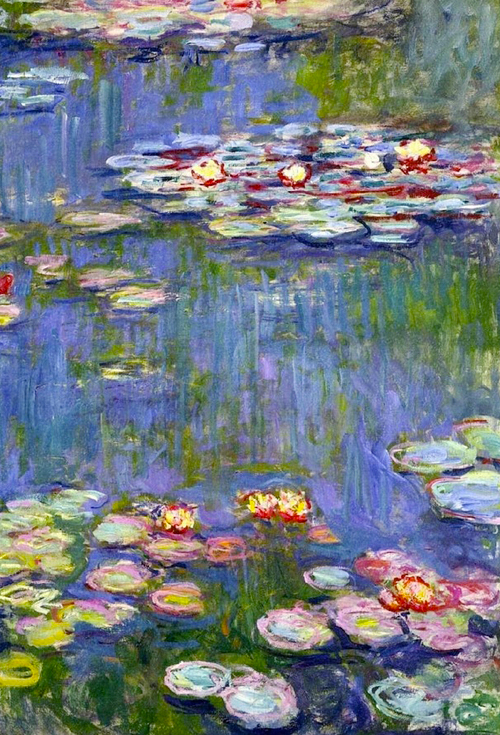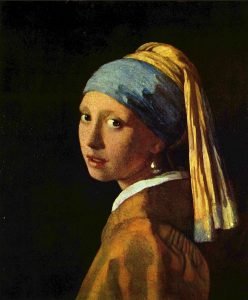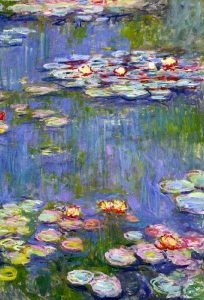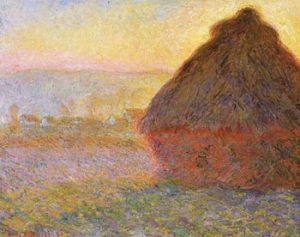*Disclaimer* I paint with broad strokes in this post.
Romanticism is a thought movement that emerged in the late 18th Century and early 19th Century. It is marked by an increased focus on the individual, tension and resolution, and optimism in literature, music, and the arts.
In art, the focus on the individual perspective was drastic compared to the Dutch Realism movement in the previous century. You may recognize Dutch Realist, Johannes Vermeer’s Girl with the Pearl Earring, which has since been turned into a novel and film starring Scarlett Johansson.
(Johannes Vermeer, Girl with the Pearl Earring)
Up until the mid-to-late 1800’s artists painted to reflect the world around them. For the most part they painted the most accurate depictions of life and people as they saw it, realistically.
Romantic artists took individual perspective to a different level. Artists began painting their impressions of the world rather than objective still life. Individual perspective allowed for individual interpretation, which meant that Monet used more vibrant colors and more exaggerated strokes when painting his famous water lilies.
(Claude Monet, Water Lilies)
Why is Romanticism important? I think that if you were to ask that question of scholars you would get a lot of different answers. Some might even say that Romanticism is not important. But what I think is important about Romanticism is not necessarily the individual interpretation (although I do think that it is fun); Romanticism is important because the romantic’s were optimistic and in some ways more honest.
What do I mean by more honest? Romantic artists were not afraid to paint imperfections. The truth is that we do not live in a perfect world. They were not afraid to show the dark side of life that is inescapable, yet they were optimistic enough to believe that it could be portrayed well, and that they could add beauty to the darkness.
Previously in art history, blemishes were painted out. Darkness was kept in the closet (I mean darkness of form, not content. There are plenty of dark/creepy pieces in the art history, but they were usually painted with the most accurate of realism and even hyper perfectionism, erasing blemishes altogether).
Creating a perfect replica of a still life on canvas is wonderful and it takes a tremendous amount of talent. But is also takes talent to take the ugly, the ordinary, and the uninteresting, and make it beautiful, worthwhile, and uplifting.
Like Monet (French Impressionist), transforming what were, dirty, ordinary haystacks, into colorful, lively, and bright objects to be appreciated.
(Claude Monet. Haystack. End of the Summer. Morning. )
Romanticism and its individualism makes me want to add beauty to what is otherwise unlovely; to add light and color to what might ordinarily be dingy. It makes me thankful for the ordinary haystacks in life, instead of only being able to appreciate the perfectly posed portrait.
Did you learn anything new about Romanticism? Let me know in the comments below!





